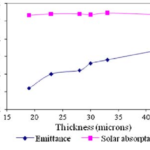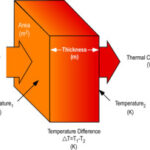· Magnetic moment: In nano-materials as large number of atoms are present in the surface, they have low co-ordination number and hence possess local magnetic moment with in themselves.
· Due to large magnetic moment these nano-materials emhibits spontaneous magnetization at smaller sizes.
· Super-paramagnetism is a form of magnetism, which appears in small ferromagnetic (or) ferrimagnetic nanoparticles. Ferromagnetic materials smaller than 10 nm can switch their magnetisation direction using room temperature thermal energy, thus making them unsuitable for memory storage.
· Ferro-magnetic and anti-ferro magnetic multilayer nano-materials has GMR (Giant Magneto Resistance) effect.
· Magnetic nanoparticles are used in a range of applications, including ferrofluids, colour
· imaging, bioprocessing, refrigeration as well as high storage density magnetic memory media. The large surface area to volume ratio results in a substantial proportion of atoms (those at the surface which have a different local environment) having a different magnetic coupling with neighbouring atoms, leading to differing magnetic properties.
· Whilst bulk ferromagnetic materials usually form multiple magnetic domains, small magnetic nanoparticles often consist of only one domain and exhibit a phenomenon known as superparamagnetic. In this case the overall magnetic coercivity is then lowered: the magnetizations of the various particles are randomly distributed due to thermal fluctuations and only become aligned in the presence of an applied magnetic field.
· Giant magnetoresistance (GMR) is a quantum mechanical magnetoresistance effect observed in nano-film structures composed of alternating ferromagnetic and nonmagnetic conductive layers. The 2007 Nobel Prize in Physics was awarded to Albert Fert and Peter Grunberg for the discovery of GMR. It is a phenomenon also observed in nanoscale multilayers consisting of a strong ferromagnet (e.g., Fe, Co) and a weaker magnetic or non-magnetic buffer (e.g., Cr, Cu); it is usually employed in data storage and sensing. In the absence of a magnetic field the spins in alternating layers are oppositely aligned through antiferromagnetic coupling, which gives maximum scattering from the interlayer interface and hence a high resistance parallel to the layers. In an oriented external magnetic field the spins align with each other and this decreases scattering at the interface and hence resistance of the device decreases.
· In magnetic materials such as Fe, Co, Ni, Fe3O4, etc., magnetic properties are size dependent. So, the coercive force (or magnetic memory) needed to reverse an internal magnetic field within the particle is size dependent. Also, the strength of a particle’s internal magnetic field can be size dependent.

· Magnetic vortices: Magnetic thin-film square-or disc-shaped nanostructures with nanometre dimensions exhibit a magnetic vortex state: the magnetization vectors lie in the film plane and curl around the structure centre. At the centre of the vortex, a small, stable core exists where the magnetization points either up or down. The reversal of the vortex core via excitation of the vortex gyration mode was discovered by time-resolved X-ray microscopy . This discovery of an easy core reversal mechanism did not only open the possibility of using such systems as magnetic memories, but also initiated the fundamental investigation of the core switching mechanism itself. They may pave the way to an alternative magnetic date storage technology.

Figure: Three-dimensional representation of the experimentally observed magnetic vortex core profile


